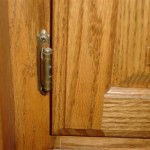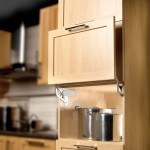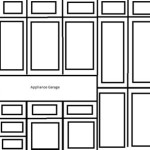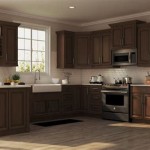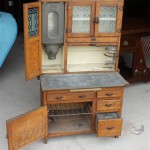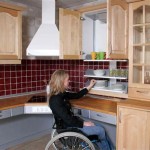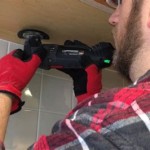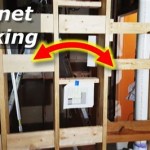Kitchen Display Unit Ideas: Optimizing Efficiency and Communication in the Modern Kitchen
The kitchen, whether in a bustling restaurant or a high-volume catering operation, is a central hub of activity. Efficient order management and clear communication between the front-of-house and back-of-house are crucial for smooth operations, reduced errors, and ultimately, increased customer satisfaction. A Kitchen Display Unit (KDU) has emerged as a vital tool in achieving this optimization. This article explores various KDU ideas, highlighting their benefits and practical applications in enhancing kitchen efficiency and streamlining communication.
A KDU, in its essence, is a digital display that replaces traditional paper-based order systems in a kitchen. It receives orders electronically from the point-of-sale (POS) system or online ordering platforms and presents them to the kitchen staff in a clear, organized manner. This digital approach offers several advantages over traditional methods, including improved accuracy, reduced paper waste, and real-time order tracking.
The implementation of a KDU system is not a one-size-fits-all solution. The specific needs of the kitchen, the volume of orders, and the layout of the workspace all influence the choice of KDU features and configurations. Understanding the various KDU ideas available is paramount for selecting the system that best aligns with the kitchen's operational requirements.
Leveraging Different Display Types and Configurations
One of the first considerations when implementing a KDU system is the type of display used. Several options exist, each with its strengths and weaknesses depending on the environment and the information requirements.
LCD monitors are a common choice due to their affordability and versatility. They offer clear visuals and can be easily integrated into various mounting configurations. They are suitable for kitchens with moderate moisture levels and where frequent cleaning is required. However, they may not be ideal for extremely high-temperature or high-moisture environments.
LED displays provide brighter and more vibrant visuals compared to LCD monitors, making them suitable for kitchens with high ambient lighting. They also tend to be more energy-efficient and have a longer lifespan. LED displays are a robust option for a kitchen environment, able to withstand some level of wear and tear.
Touchscreen displays offer an interactive approach to order management. Kitchen staff can directly interact with the orders, marking them as in-progress, completed, or on-hold. This direct interaction enhances communication and reduces the need for verbal confirmation. Touchscreen displays are particularly useful for stations where complex orders are assembled, allowing for easy updates and modifications.
The configuration of the KDU is just as important as the display type. A single large display may be sufficient for smaller kitchens with a limited number of stations. However, larger kitchens with multiple stations dedicated to specific food preparation tasks benefit from having multiple smaller displays, each dedicated to a specific station. This allows staff to focus solely on the orders relevant to their station, reducing clutter and improving efficiency.
Another configuration option is a tiered display system. This involves stacking multiple displays, allowing for more information to be presented without overwhelming the staff. This is particularly useful in high-volume kitchens where a large number of orders are constantly flowing through the system.
Consideration must be given to the mounting and placement of the displays. They should be positioned in a location that is easily visible to the relevant staff members and minimizes obstructions. Wall mounting is a common option, freeing up valuable counter space. Ceiling mounting can also be used in certain situations, providing a clear view of the display from multiple angles. The chosen mounting strategy must also consider the ease of cleaning and maintenance.
Implementing Software Features for Enhanced Order Management
The software that powers the KDU system is as important as the hardware. The software dictates how the orders are displayed, how they are prioritized, and how the kitchen staff interacts with the system. Several software features can significantly enhance order management and streamline the kitchen workflow.
Order prioritization is a critical feature, especially in high-volume kitchens. The software should allow for orders to be prioritized based on factors such as order time, table number, or specific customer requests. This ensures that orders are prepared in the most efficient and customer-friendly manner. For example, orders for tables with a high check average or those with specific dietary restrictions could be prioritized to ensure customer satisfaction.
Order routing is another essential feature. This allows the system to automatically route orders to the appropriate stations based on the items ordered. For instance, orders containing pizzas can be routed to the pizza station, while orders containing salads can be routed to the salad station. Automated order routing eliminates the need for manual order distribution and reduces the risk of errors.
Color-coding is a visual cue that can significantly improve order management. Different colors can be used to indicate the status of an order (e.g., red for new, yellow for in-progress, green for completed), the urgency of an order, or the type of order (e.g., dine-in, takeout, delivery). This visual differentiation allows staff to quickly assess the situation and prioritize tasks accordingly.
Bump bar integration provides a physical interface for managing orders. A bump bar is a small keypad with buttons that allow staff to mark orders as completed, on-hold, or re-fired. This physical interface is often preferred by kitchen staff as it provides a tactile and intuitive way to interact with the system. It can also be more efficient than using a touchscreen in a fast-paced environment.
Reporting and analytics are valuable features that provide insights into kitchen performance. The software can track metrics such as order completion times, average ticket times, and the number of items prepared per station. This data can be used to identify bottlenecks in the kitchen workflow, optimize staffing levels, and improve overall efficiency. Reports can also track waste and inefficiencies, allowing for adjustments to inventory and ordering.
Integration with inventory management systems is another crucial aspect of KDU software. This integration allows the system to track ingredient usage in real-time and automatically update inventory levels as orders are prepared. This helps to prevent shortages, reduce waste, and improve inventory accuracy. Integration can also provide alerts for low-stock items, prompting staff to reorder before supplies run out.
Customization Options and Considerations
The ability to customize the KDU system is crucial for adapting it to the specific needs of the kitchen. Customization options can range from simple changes to the display layout to more complex modifications of the software functionality.
Customizable display layouts allows for information to be presented in a way that is most easily understood by the kitchen staff. This can involve changing the size and placement of order information, adding custom icons or logos, and adjusting the overall visual design of the display. The goal is to create a display that is both informative and visually appealing.
Customizable alerts and notifications ensure that staff are promptly notified of important events. This can include alerts for new orders, orders that are nearing their due date, or orders that require special attention. The alerts can be delivered audibly or visually, depending on the environment and the preferences of the staff.
Multi-language support is essential for kitchens with a diverse workforce. The software should be able to display orders and instructions in multiple languages, making it easier for all staff members to understand the information. This can improve communication and reduce the risk of errors.
Offline mode functionality provides a backup solution in case of internet connectivity issues. The system should be able to continue operating in offline mode, allowing the kitchen to continue processing orders even if the internet connection is temporarily unavailable. This ensures that the kitchen can maintain its operations and avoid disruptions to service.
Integration with loyalty programs can further enhance the customer experience. The KDU can display information about the customer's loyalty status, allowing staff to personalize the service and offer incentives to repeat customers. This can help to build customer loyalty and increase sales.
When customizing the KDU system, it is important to consider the needs and preferences of the kitchen staff. Involving the staff in the customization process can help to ensure that the system is user-friendly and meets their specific requirements. Training is also essential to ensure that staff are comfortable using the system and can take full advantage of its features. Consideration should also be given to the ease of maintenance and updates of any customized elements.
Choosing the right KDU system requires a careful assessment of the kitchen's specific needs and operational requirements. By considering the various KDU ideas presented in this article, restaurants and catering operations can select a system that optimizes efficiency, improves communication, and ultimately enhances the customer experience.

How To Style Glass Kitchen Cabinets Sanctuary Home Decor

Display Cabinets Design Ideas

30 Design Ideas For Luxurious Traditional White Kitchen Cabinets Decorcabinets Com

Display Cabinets Design Ideas

10 Styling Ideas That Make Glass Front Cabinet Displays Beautiful Lora Bloomquist Create Ponder
:strip_icc()/101956656-54ebe26072c545a4a05e9aa87a4f1b28.jpg?strip=all)
29 Affordable Kitchen Decor Ideas For A Weekend Refresh

How To Style A Glass Display Cabinet

How To Style Glass Kitchen Cabinets Sanctuary Home Decor

Kitchen Wall Decor Ideas
:strip_icc()/101634871-9532042e1719420b859d6d4d4b732be3.jpg?strip=all)
16 Ideas For Decorating Above Kitchen Cabinets
Related Posts

